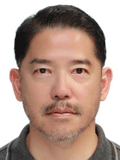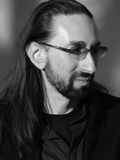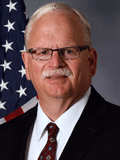ISQED'24 Keynotes
- Check out Keynotes from previous years.
April 3, 2024
Cross-Layer Optimization of Energy Harvesting and Storage
 Naehyuck Chang
Naehyuck Chang Naehyuck Chang - Executive Vice President, Samsung SDI America
The use of energy harvesting is mandatory for carbon-neutral ecosystems. For portable systems, energy harvesting makes it possible to operate them without full-capacity batteries. Energy harvesting generally lacks load-following capability; harvesting-storage-use is a typical energy harvesting system structure. Appropriate power conversion processes are commonly used during the transition between harvesting, storage, and use. Material and device research is the mainstream for energy harvesting, which provides fundamental solutions for more efficient energy harvesting. However, proper system-level management is also vital. This talk will introduce several cross-layer optimization practices of the harvesting-storage-use systems for a range of applications, from wearable devices to electric vehicles and grid-connected energy storage systems. First, we will introduce the online reconfiguration of photovoltaic arrays combating partial shading with examples of stationary and onboard energy harvesting for electric vehicles. We will also mention the online reconfiguration of thermoelectric device arrays dealing with the temperature gradient of the vehicle radiator. Second, we will address radical cross-layer optimization of a wearable solar energy harvesting system, deleting the entire storage and conversion processes. We demonstrate that aggressive dynamic power management can delete the energy storage and power converters. While load following is a typical setup of the energy harvesting system, such a radical cross-layer optimization makes the load (a UV detector) follow the energy harvesting of a photovoltaic cell. Finally, we will introduce solar energy harvesting with energy storage, one of the most promising ways to overcome the Duck Curve.
About Naehyuck Chang
Naehyuck Chang is an Executive Vice President at Samsung SDI America. He was the previous Head of Development at Samsung SDI Headquarters from 2021 to 2023. Dr. Chang was in charge of all the automotive and energy-storage product developments, from cells to systems. From 1997 to 2014, he was with the Department of Computer Science and Engineering at Seoul National University. Since 2014, he has been a Full Professor at the Department of Electrical Engineering, Korea Advanced Institute of Science and Technology. Dr. Chang is a Fellow of the ACM and a Fellow of IEEE for his contributions to low-power systems. Dr. Chang is a member of the National Academy of Engineering of Korea. Dr. Chang's research interests include low-power cyber-physical systems and Design Automation of Things, such as systematic design and optimization of fuel cell systems, energy storage systems, electric vehicles, drones, and energy harvesting. Dr. Chang is specifically interested in mobility electrification in terms of design, optimization, and management of the power, energy, and lifetime of the battery cells. Dr. Chang was the Chair and the Past Chair of the ACM Special Interest Group on Design Automation. Dr. Chang was the TPC Co-Chair of DAC 2016, ASP-DAC 2015, ICCD 2014, CODES+ISSS 2012, and ISLPED 2009, and the General Co-Chair of VLSI-SoC 2015, ICCD 2015 and 2014, and ISLPED 2011. He was the recipient of the 2014 ISLPED Best Paper Award, the 2011 SAE Vincent Bendix Automotive Electronics Engineering Award, the 2011 Sinyang Academic Award, the 2009 IEEE SSCS International SoC Design Conference Seoul Chapter Award, and various ISLPED Low-Power Design Contest Awards in 2002, 2003, 2004, 2007, 2012, 2014, and 2017, respectively. Dr. Chang was the Editor-in-Chief of the ACM Transactions on Design Automation of Electronics Systems. He was an Associated Editor for the IEEE Transactions on VLSI, IEEE Transactions on CAD, ACM Transactions on Embedded Computing Systems, IEEE Embedded Systems Letters, and IEEE Transactions on Circuits and Systems Part I.
Why we did not have flying cars for 100 years
 Jim Dukhovny
Jim DukhovnyJim Dukhovny - CEO, Alef Aeronautics
For more than a hundred years, the concept of flying cars has captured the imagination of innovators, engineers, and the general populace, promising a revolution in how we perceive personal and city travel. However, despite the long-held aspirations and technological progress, our cityscapes are yet to witness the bustling activity of airborne vehicles that many had envisioned. In his keynote speech, Jim Dukhovny, CEO of Alef Aeronautics, provides an insightful analysis into why the vision of flying cars has not materialized over the past century, dissecting the intricate array of technical, regulatory, and societal obstacles that have impeded their fruition. The presentation delves into the substantial barriers that have historically derailed this innovation. It highlights the formidable engineering feats required to produce vehicles that are both airworthy and road-ready, ensuring safety, efficiency, and reliability, alongside navigating the complex regulatory frameworks that oversee both airspace and terrestrial mobility. This exploration sheds light on the numerous elements that have maintained flying cars as a futuristic concept rather than a present-day reality.
About Jim Dukhovny
Jim Dukhovny is the CEO of Alef Aeronautics, a sustainable electric transportation company that is designing and developing the world's first flying car. Dukhovny has received education from UC Berkeley, Santa Clara University, and Stanford University. Influenced by his father, Leonid Dukhovny, a well-known singer-songwriter, poet, scientist, and avid science fiction lover, Jim Dukhovny has created a number of organizations spanning the entertainment, software, and non-profit industries. Among his notable achievements, Dukhovny co-founded and led startups such as Intellectual Casino, Transcoder, DjWizard Presents, was the president of the Science Fiction Society of Silicon Valley and contributed to the architecture of Windows 10, Walmart's online imaging system, and a number of Yahoo products. In 2015, Dukhovny, together with Constantine Kisly, Pavel Markin, and Oleg Petrov, founded Alef Aeronautics to develop the world's first flying car. The prototype of this car successfully debuted in 2022 and through pre-sales became the world's best-selling aircraft in 2023.
April 4, 2024
Reflections on Microelectronic and Microelectromechanical Technologies and the Challenges of Implementing Emerging Technologies
 Clare D. Thiem
Clare D. Thiem Clare D. Thiem - Air Force Research Laboratory (AFRL)
The last 35 years has seen amazing and significant changes to the electronics industry. Reflecting on past research and development activity that includes microelectronic and microelectromechanical technologies, one can gain a perspective on the implementation challenges for today’s emerging technologies. During this talk lessons learned will be presented along with some brief insight into current activity to exploit emerging technologies. Proper design techniques, methods, and processes are needed to successfully move technologies from the lab bench to the field.
About Clare D. Thiem
Mr. Thiem is a Senior Electronics Engineer in the Air Force Research Laboratory’s (AFRL’s) Information Directorate’s High Performance Systems Branch (RITB). His current research interests pursue the development of practical, hardware-based, biologically inspired computing technology for Department of Air Force for size, weight, and power constrained systems. He currently serves as the Air Force Program Manager for the OUSD(R&E) funded Tri-Service, A Combined Development Pipeline for Novel Neuromorphic Hardware (NeuroPipe) Tri-Service Advanced Research for the Advancement of S&T Priorities (ARAP). He is the Program Manager for the Day 1 Deployable Machine Learning Program and Chief Engineer/Deputy Program Manager for the Emerging Nanotechnology for Autonomous Systems Program. He is an AFRL/RI Topic Lead for the Extreme Neuromorphic Materials and Computing Center of Excellence (CoE), and the AFRL Lead for Computational Efficiency in the Efficient and Robust Machine Learning (ERML) CoE. Mr. Thiem leverages over 36 years of technical experience and leadership within the Department of Defense working with a variety of technologies. He earned a Master of Science, 2002, Mechanical Engineering, National Technological University, Fort Collins, CO; and a Bachelor of Science in Engineering, 1986, Aerospace Engineering, College of Engineering, The University of Michigan, Ann Arbor, MI. He has authored/co-authored over 40 publications.

